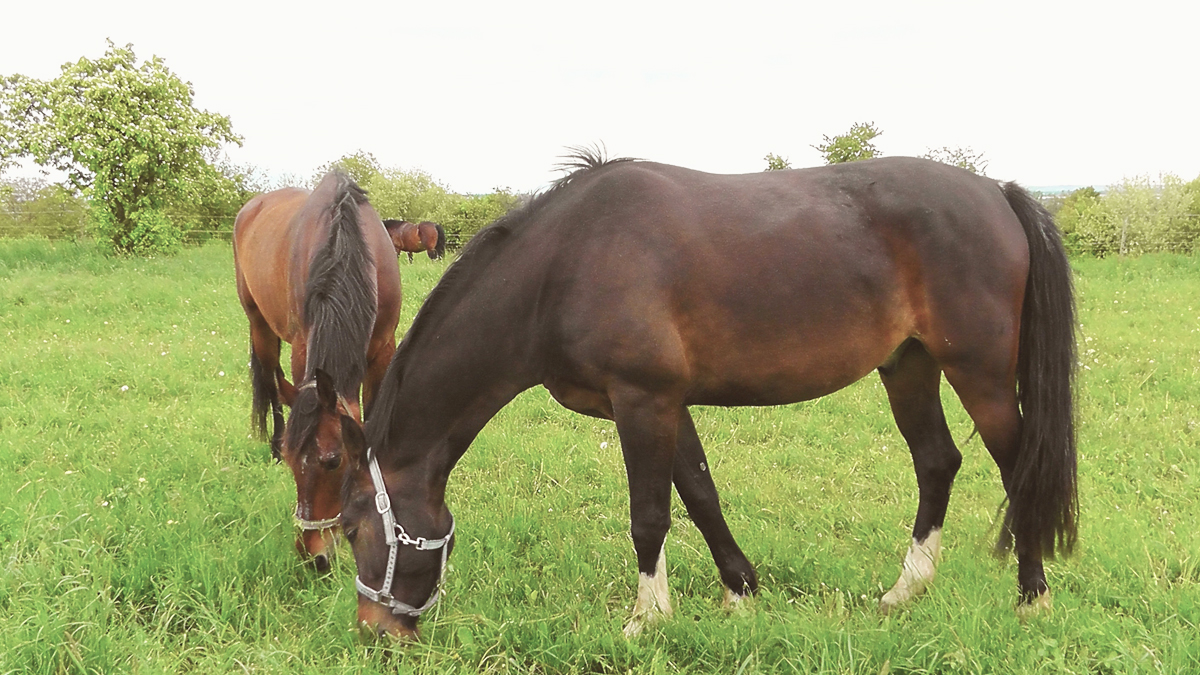Help Safeguard Your Horse by Learning the Basics of Vaccine Storage and Administration
by Dave Sauter, DVM
 Vaccination in horses, like in humans, has had a huge impact in reducing the incidence and severity of many serious diseases. Some of these diseases can have fatal consequences or are highly contagious, such as Tetanus, West Nile Virus and influenza. This article will cover practical tips to improve safety and effectiveness of vaccination and to minimize adverse side effects.
Vaccination in horses, like in humans, has had a huge impact in reducing the incidence and severity of many serious diseases. Some of these diseases can have fatal consequences or are highly contagious, such as Tetanus, West Nile Virus and influenza. This article will cover practical tips to improve safety and effectiveness of vaccination and to minimize adverse side effects.
Storage of Vaccines
It is critically important that vaccines are stored properly at all times, from the time they leave the manufacturer until they are administered to the individual horse. Most vaccines are supposed to be stored at between 35°F and 45°F. Failure to maintain the vaccines at the proper temperature can result in harmful changes in the product that can lead to less effectiveness in preventing disease and greater chance of harmful reactions and side effects. It is important to “maintain the cold chain” during transport; that includes the trip from your veterinary clinic or feed store to the refrigerator in your home. It is best to store vaccines in the middle of your refrigerator, rather than in the door shelf, which might get too warm when the door is opened, or the back of the refrigerator, where the temperature might be colder. Have an accurate thermometer to ensure the temperature is set correctly and check it daily. In many cases, it is worse for the vaccine to get too cold. Freezing is especially harmful. Even approaching 32°F can result in microcrystals that are not visible but are damaging to the vaccine, resulting in more chance of adverse reactions. If transporting your vaccine in a package with an ice pack for the trip home, wrap the ice pack in paper to prevent direct contact. Protect vaccines from sunlight as well. Sunlight not only heats up the vaccine but ultraviolet radiation also has damaging effects. Discard the vaccine if it has been stored outside the recommended storage temperature range; the vaccine has ice crystals in it or, worse, has frozen; has undergone a color change; is past its expiration date.
Timing of Vaccination
The purpose of a vaccine is to expose an individual to an attenuated pathogen or part of a pathogen that will effectively stimulate the immune system so that, upon exposure, it will respond and protect the individual from the disease the pathogen causes. It takes time after the vaccine is administered to have this effect, generally a couple of weeks (or a couple of weeks after the booster, if one is required). Consequently, plan ahead:
- Vaccinate prior to mosquito season for diseases such as West Nile virus and Sleeping Sickness ( equine encephalitis).
- Vaccinate at least a couple weeks prior to anticipated exposure, such as show season
- Avoid compounding stresses. Vaccination is a form of stress. Subjecting a horse to other stress at the same time will reduce the protective effect from the vaccine and increases the risks for complications. Avoid vaccination if relocation is planned in much less than two weeks and not for another three weeks after the move. A few other examples include weaning, castration, and long hauls.
Administration
Most equine vaccines are administered by intramuscular injection. Acceptable sites for IM injection in horses is beyond the scope of this article but they include the large muscles on the sides of the neck and the back legs. To achieve the desired deep intramuscular injection, typically a 20 gauge, inch and half needle is used, perpendicular to the skin, to ensure injection deep into the muscle tissue. The skin should be reasonably clean and dry to prevent possible infection at the injection site. Warm the vaccine up in the palm of your hand immediately prior to use.
Response Versus Reaction
Vaccines are intended to generate an immune response. Consequently, it is expected that there could be some injection site heat and swelling. It is expected that there could be some generalized effect, such as less energy and activity for a day or two. On the other hand, vaccination reactions are more serious and unexpected effects and should be reported to your veterinarian, such as: greater heat, swelling and pain at the injection site; lethargy, depression, fever; allergic reaction such as hives; anaphylactic reaction, such as swelling in the head, sweating, colicky symptoms. These are life threatening and require immediate veterinary care.
Some light exercise the day of the vaccination and for the next few days can be very helpful to prevent some of these effects. Some horses, especially those with a history of vaccine reactions, can benefit from treatment with a non steroidal anti-inflammatory drug just prior to and for a couple days following vaccination.
Simple steps on how vaccines are stored, handled, administered, and timed can have an enormous effect. Done carefully and properly, vaccination will be safer and more effective with fewer reactions and complications.
Published September 2013 Issue

Dave Sauter is a Minnesota native and graduated from the University of Minnesota in 1987. Following graduation he interned at Rood and Riddle Equine Hospital in Lexington, Kentucky. After this internship, he continued to work exclusively with horses for another five years in Kentucky before moving out West and joining Kulshan Veterinary Hospital in Lynden, WA. He is a member of the AAEP, AVMA and the WSVMA. For more information about Kulshan Veterinary Hospital call 360-354-5095 or email [email protected]. www.KulshanVet.com






